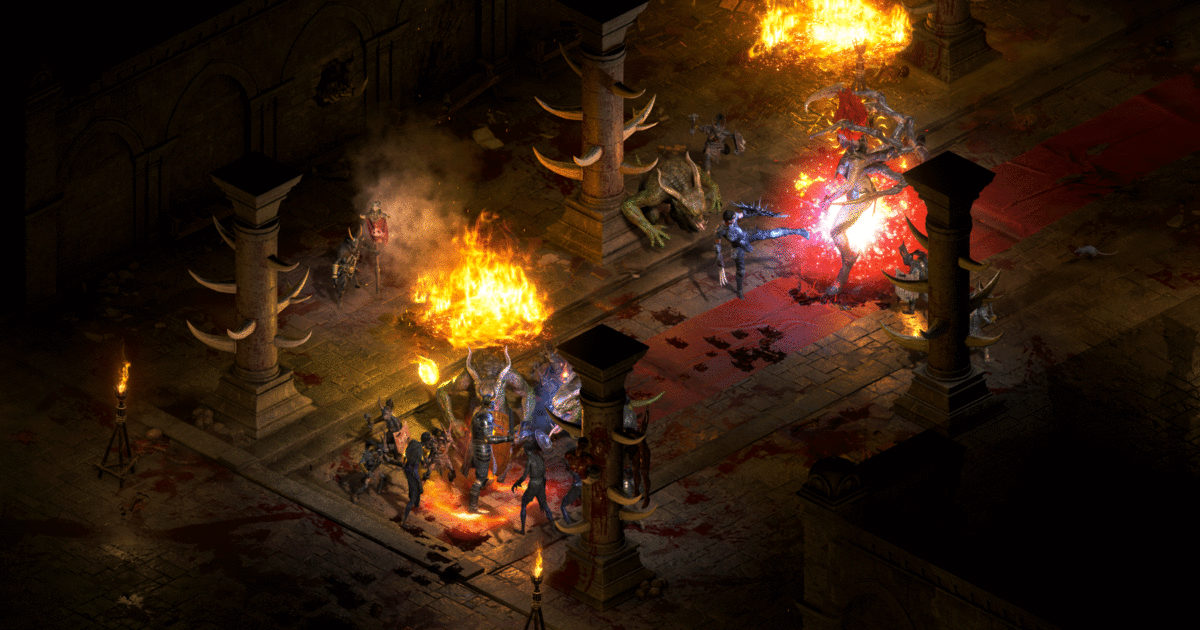
David L. Craddock is the author of more than a dozen books about video games, including Break Out, about the history of Apple II games, and Rocket Jump, about the history of first-person shooters.
“I tend to write a lot about games made in the ’80s, ’90s, and early ’00s,” Craddock says in Episode 481 of the Geek’s Guide to the Galaxy podcast. “I love to write about creative people who had big ideas but very, very tight restrictions, and I think that from that comes some of the most enduring products—most enduring experiences—ever made.”
One of Craddock’s most recent books is Stay Awhile and Listen: Book II, about the making of Blizzard’s classic action RPG Diablo II. Craddock says this volume was a much bigger undertaking than Stay Awhile and Listen: Book I, about the original Diablo. “There was just so much more to juggle in terms of timeline, in terms of game,” he says. “I think that a good 10 chapters in Stay Awhile and Listen: Book II focus on Diablo II‘s development. The game was just that massive, and things happening within Blizzard and Blizzard North were that important as well. It’s just a much bigger undertaking.”
The creation of Diablo II was an exhausting process that involved a brutal 18-month crunch. Employees were handed sleeping bags and provided regular meals so they never had to leave the office. The experience took a heavy toll on everyone involved. “You miss your home, you miss your bed, you miss your significant other, you miss your friends, you miss your favorite TV shows—actually watching them live with the rest of the world,” Craddock says. “These people sacrificed a lot to make this game.”
Listen to the complete interview with David L. Craddock in Episode 481 of Geek’s Guide to the Galaxy (above). And check out some highlights from the discussion below.
David L. Craddock on Diablo II: Lord of Destruction:
“Diablo II launched on June 29th, 2000. One year later, to the day, Diablo II: Lord of Destruction—the one and only official expansion for the game—launched. Diablo II is great, but Lord of Destruction made it even better. Everyone who worked on Lord of Destruction considers it the high point of their time at Blizzard North, because for the year after Diablo II‘s launch, when a lot of other people at the studio—most of the rest of the studio—were drifting, getting very frustrated and very burned out, the Lord of Destruction team was really living every game developer’s dream. You have a successful product, you have a pipeline in place to make more content for that product, you’ve already gone through the labor pains of putting all this stuff in place, now you can just create more stuff.”
David L. Craddock on David Brevik:
“He was one of the people most burned out by Diablo II, because he put so much pressure on himself to succeed. It was kind of controversial, because toward the end he kind of checked out. He was playing a lot of Everquest, and a lot of the other developers, who were still burning the midnight oil, were upset with him. But his marriage was falling apart, he’d put a lot of pressure on himself for both games. He just kind of needed to check out mentally. … He said, ‘I was a ‘seagull manager.’ I would stay home most of the time, and when I’d come in I’d crap all over everything, squawk a lot, and leave.’ And he said that, that’s by his own admission. I have a lot of respect for people who put the truth—the creative truth—ahead of their own ego.”
David L. Craddock on business:
“Blizzard North didn’t want Blizzard Entertainment—the much larger company—coming in and telling them what to do, and so [Blizzard North] shielded their developers from the other Blizzard. On the one hand that’s something that a good manager does: If you’re working on a game and you’re not management, the last thing you want to worry about is, ‘Are we going to get paid?’ or ‘I hear we might be sold.’ You don’t want to worry about that, and the managers don’t want you worrying about that, they want you working. But the downside of that is that if and when those managers leave and a new regime comes in, they don’t know you. You’re just another face in the lineup, and so they have no problem letting you go.”
David L. Craddock on storytelling:
“The Diablo II cinematics were developed at Blizzard Entertainment—they were completely separate from the development of the game itself. … You could play Diablo II without watching any of the cinematics and not miss a beat, because the beauty of Diablo II is that you don’t have to pay attention to the story—you can just kind of click through and pay attention to the loot. Those games are inherently replayable, and each time you play you pay less attention to the story, because it’s just old hat by that point. That was actually one of the problems with Chris Metzen taking such a prominent role on Blizzard Entertainment’s Diablo III—the version that eventually came out in 2012. The story really got in the way, and that’s a mistake that Blizzard North never would have made.”
More Great WIRED Stories
Go Back to Top. Skip To: Start of Article.
